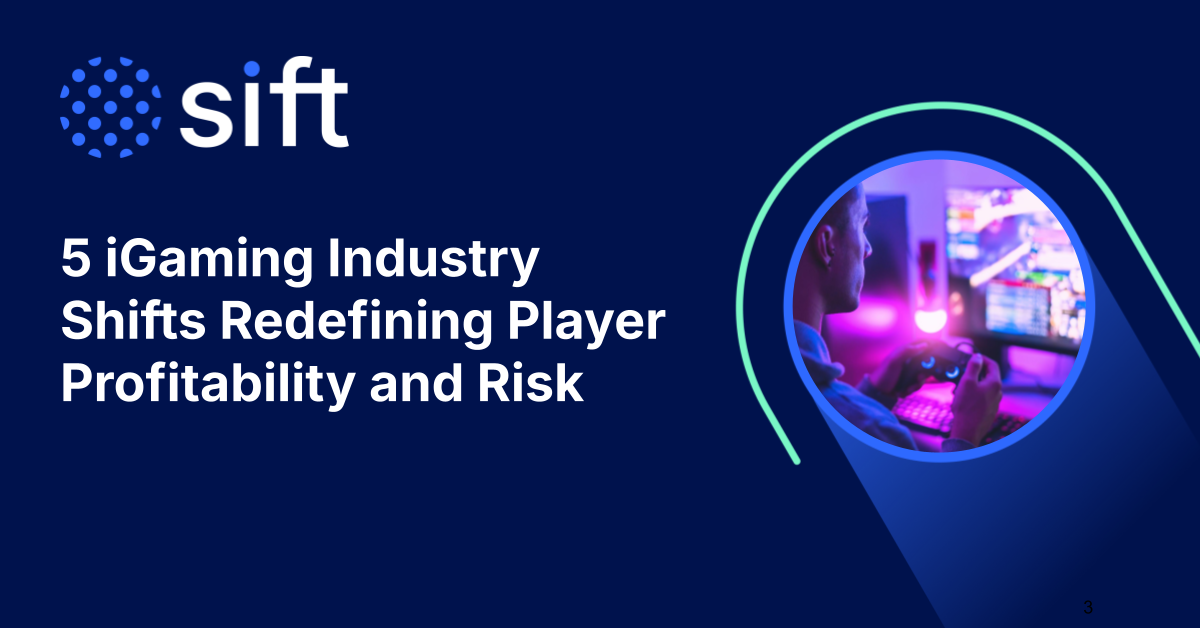According to this year’s Gartner Market Guide for Online Fraud Detection, “By 2023, 30% of banks and digital commerce businesses will have dedicated trust and safety teams to protect the integrity of all online brand/customer interactions, which is an increase from fewer than 5% today.*”
As the leader in Digital Trust & Safety, Sift believes this statement is an example of the fundamental shift from traditional fraud prevention solutions and strategies to a trust and safety approach that is becoming more and more common for online businesses.
Companies can no longer focus solely on payment fraud detection or mitigation. Successful businesses must abandon that narrow mindset and instead recognize the need for fraud prevention across a variety of use cases and fraud types, including account takeover (ATO), promo abuse, synthetic fraud, and others.
To help you make sense of the report, we have identified the three takeaways that show the importance of adopting a more comprehensive, flexible approach to combating fraud and driving growth.
Fraud is a growing problem (and the online fraud detection category is getting crowded)
Let’s face facts—online abuse and fraud are growing problems. Just look at the growing number of online fraud detection (OFD) and prevention solutions on the market for proof. In fact, even tech giants like Amazon and Microsoft are throwing their hats into the ring. According to Gartner, “new vendors are typically nascent businesses, often venture-capital-funded, that must build up market share and, just as importantly, mind share. However, this year the digital commerce fraud prevention market faces possible disruption from the entry of Amazon and Microsoft.*”
While Amazon and Microsoft are household names, they’re new to the fraud prevention space. Expect to see their offerings mature over the next few years but, as is the case with most colossal companies, with less of a focus on understanding the nuances of customers’ businesses and their unique fraud needs.
But even with the growing number of vendors, fraud levels are increasing. This is due, in part, to online businesses (and many OFD vendors) viewing the problem through a troublesomely narrow lens. Fraud can happen at any point in the customer journey—from account creation to making a purchase to posting a review. The only way to ensure you’re covering all your bases is to look for a strategy and solution that not only safeguard every step of the customer journey but unlock rapid growth.
As the leader in Digital Trust & Safety, Sift understands the need to prevent all types of online fraud and abuse—at every point in the customer journey—with a single integrated solution. Sift provides a proven and powerful, end-to-end fraud prevention solution that leverages best-in-class machine learning, a vast global network of fraud fighters sharing insights and data, and a team of fraud experts to help businesses design a comprehensive trust and safety strategy.
Orchestration is key
Forward-thinking businesses are moving away from a narrow view of fraud and moving towards a mindset that incorporates a variety of use cases and fraud types. To protect against all possible threats, online fraud detection (OFD) and fraud prevention solutions need to be able to either address and safeguard all possible scenarios or make it easy to combine and integrate multiple solutions.
As Gartner states, “historically, the OFD market has been made of vendors that have focused on a single capability, such as device identification or event monitoring, and end-user organizations have generally integrated them each separately. This has resulted in complexity with respect to the orchestration of these multiple solutions.”
To combat that growing complexity, Sift introduced Sift Connect, a central location for all connection paths into Sift, including 3rd-party applications/connectors as well as a set of open APIs for simple integration into other applications and workflows. This is especially important for companies with large ecosystems and homegrown applications who are dealing with the challenge of orchestration. Sift Connect provides a very flexible and simple solution. We are granting access to Sift’s Open API library from the Sift Console, allowing customers and developers to quickly create the integrations they need and orchestrate all fraud-fighting capabilities from a single pane of glass.
The trust and safety mindset is taking hold
When Sift pioneered Digital Trust & Safety more than a year ago, it was an approach that few had heard of and even fewer were adopting. But as the report notes, “analysis of social media by Gartner shows a gradual increase in conversations about trust and safety roles in organizations from 2019 onwards.”
Like Gartner, we are seeing a substantial shift in the market from primarily focusing on protecting payment transactions for fraud to looking at the entire customer journey, and not only protecting a business but growing revenue. Leaders in e-commerce across a variety of industries rely on Sift to help align risk and revenue decisions at every step of the customer journey.
It’s clear that staying ahead of fraud is more difficult than ever, meeting customer demands is more complicated, and the way businesses have been fighting fraud no longer works. The traditional mindset towards managing risk has focused almost exclusively on preventing loss. The organizational structures, processes, and tools that accompany legacy approaches sprang from a single goal: risk mitigation. Little or no emphasis was placed on maintaining a great customer experience, increasing user engagement, or enabling revenue growth. With a Digital Trust & Safety approach, there doesn’t have to be a tradeoff between risk mitigation and business growth. And more and more businesses are making the move to Digital Trust & Safety.
Reach out to Sift to learn how Digital Trust & Safety can help you stay ahead of fraudsters and unlock more revenue for your business.
*Gartner, Market Guide for Online Fraud Detection, Jonathan Care, Akif Khan, 13 May 2020
GARTNER is a registered trademark and service mark of Gartner, Inc. and/or its affiliates in the U.S. and internationally, and is used herein with permission. All rights reserved.
Gartner does not endorse any vendor, product or service depicted in its research publications, and does not advise technology users to select only those vendors with the highest ratings or other designation. Gartner research publications consist of the opinions of Gartner’s research organization and should not be construed as statements of fact. Gartner disclaims all warranties, expressed or implied, with respect to this research, including any warranties of merchantability or fitness for a particular purpose.







